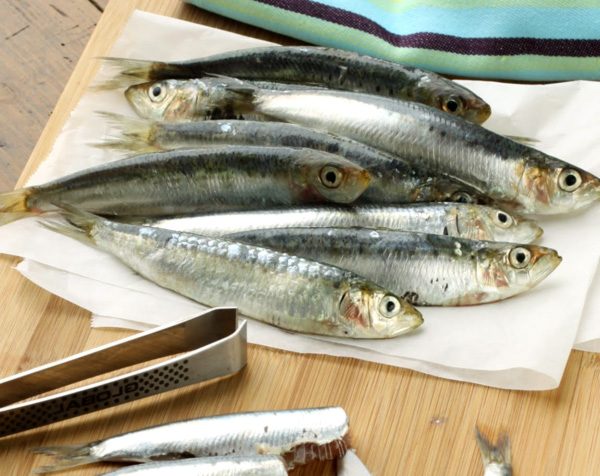If you need to rely permanently on your fishmonger to buy your fish and feel lost when you’re alone in a local market, here are some useful tips to recognize good sea products and choose your fish wisely.
Keep in mind these general rules, which apply to all fish species:
- The skin must be shiny.
- The gills should be bright red or bright pink (depending on the species).
- The eye must be shiny. A yellow eye is symptom of a bad product.
Anchovies:
Do not buy anchovies if they have black backs. They must have greenish backs with sharp and shiny silver edges on the sides.
Eels:
They should be purchased alive. We must choose the ones with a black back and silver belly. Open their mouth and feel to see if they don’t smell dirty.
Sea Bass:
Do not buy too big, no more than 500 g, because beyond this, the flesh is of very poor quality.
Brill:
Choose it when their back is blackish gray.
Pike:
Do not buy a freshwater pike that has a long body, which is brown on the back and yellowish on the sides with a silvery belly. This pike will certainly have an unpleasant and muddy flesh.
Carp:
Choose carp from running water whose scales are brown on the back and golden yellow on the sides. Mud carp is much darker.
Plaice:
Buy it in May because that is when the meat is best. Before buying, check the mouth that should absolutely not smell of oil.
Pollock (aka coley):
Pollock should not have a dull eye, and should also have no odor.
Bream:
Purchase it small as it tastes better.
Mudfish:
Do not buy it unless it is very fresh. This is recognized by its flesh smelling of cucumber.
Sturgeon:
Must be purchased preferably in the spring when it comes to fresh water. The rest of the time, it lives in the sea and the taste is not so pleasant.
Stud:
Do not buy during the spawning season in April and May. This is the best fish for frying.It must have thin a long body.
Herring:
Choose it when the back is blue and the sides are a matte color. The darker the back, the less it should cost.
Flounder:
Do not eat from April to the end of January because the flesh is weak at this time. Before you buy, look at and smell the gills. Do not buy meat that smells of mud.
Mackerel:
It must be very fresh. The bands on its back should be a greenish blue. The gills should be bright red and the eye should be bright yellow with a circle.
Whiting:
Do not buy it during the spawning season from April to June, but from November to December. Select whiting from 11 to 13 inches (30 to 35 cm) in length.
Cod:
A winter delight. To be fresh, the eye should be bright and the gills should be shrimp pink. The best parts are on the side of the tail.
Mullet:
Do not buy if the mouth and gills smell of mud.
Perch:
Don’t buy if the scales of the fish are too soft, which is proof of poor quality.
Ray:
Choose a preferably curved line: the overall color is greenish with brown spots, and the rounded belly is white. Skin is thin with many bumps in the form of a “bomb”. Do not buy fish with a smell of oil or ammonia.
Red mullet:
Do not buy it if its color is not red and if it has dark blotches.
Sardine:
Buy it only if it has bright eyes, shiny scales and bright red gills.
Salmon:
Purchase in spring season. Take care that the blood surrounding the central ridge is bright red and the flesh is a red-brick color. The section should be yellow colored, tinged with red rose.
Sole:
Choose preferably thicker soles, firm and fat, with an evenly cream belly. Soft soles are simply not good.
Tuna:
Buy tuna slices that are very firm and bright red. Do not buy if they are soft and dark.
Trout:
Do not buy them during spawning periods: November and December. Do not buy either the trout in stormy weather or hot weather in summer as the first quality trout is the freshest. Trout must have a keen eye, very pink gills and shiny silver scales.
Turbot:
Choose them when their back is blackish gray. Do not buy the turbot if it’s colored on both sides.


